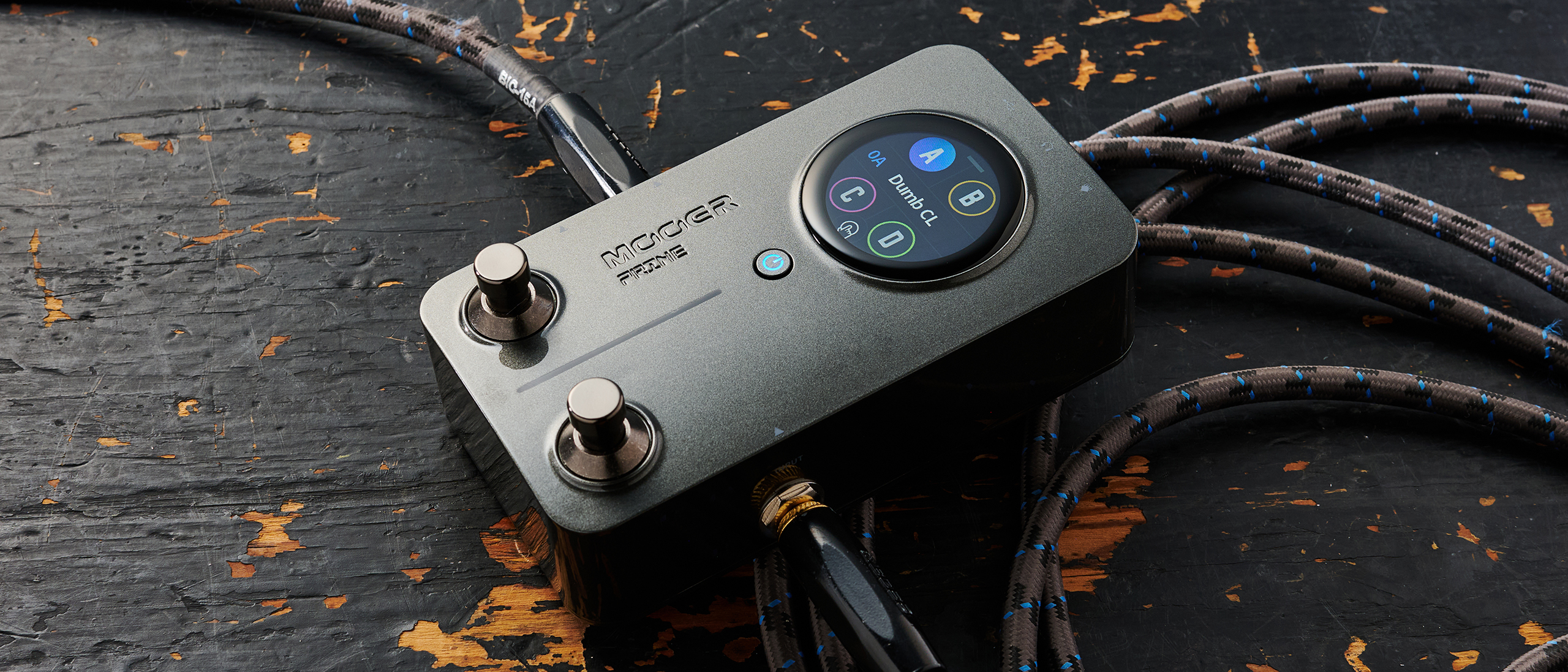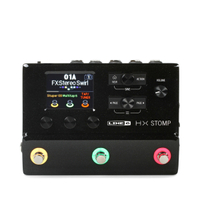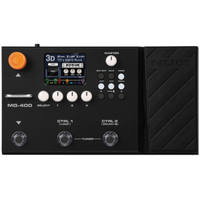MusicRadar Verdict
Another contender in the world of affordable digital modelers, the Mooer M2 packs a lot into a small pedal. If you’re using a smart device alongside your gear then you’ll get along with it just fine, and the amount of models and features on offer means you're unlikely to get bored in a hurry.
Pros
- +
Very wide range of sounds and features.
- +
Great price.
- +
Compact.
Cons
- -
All the tone tweaking is done on your phone or tablet.
- -
Footswitches only scroll backwards and forwards through presets.
- -
Plastic casing.
MusicRadar's got your back
What is it?
The latest in Mooer’s budget-friendly Prime multi-fx series, the Minimax M2 packs an unholy amount of features into a standard sized compact pedal. It’s essentially a multi-effects unit, with built-in amp and cab simulators as well as a tuner, looper and drum machine.
It’s powered by a rechargeable lithium battery that offers up to six hours playback, so the M2 can be used without mains power, but should you not want to run that risk, the only power it takes is via USB-C. Handily though, you can also utilise this connection and use the pedal as a recording interface. The pedal has a touchscreen and two footswitches, but there’s also a dedicated app to use alongside it.
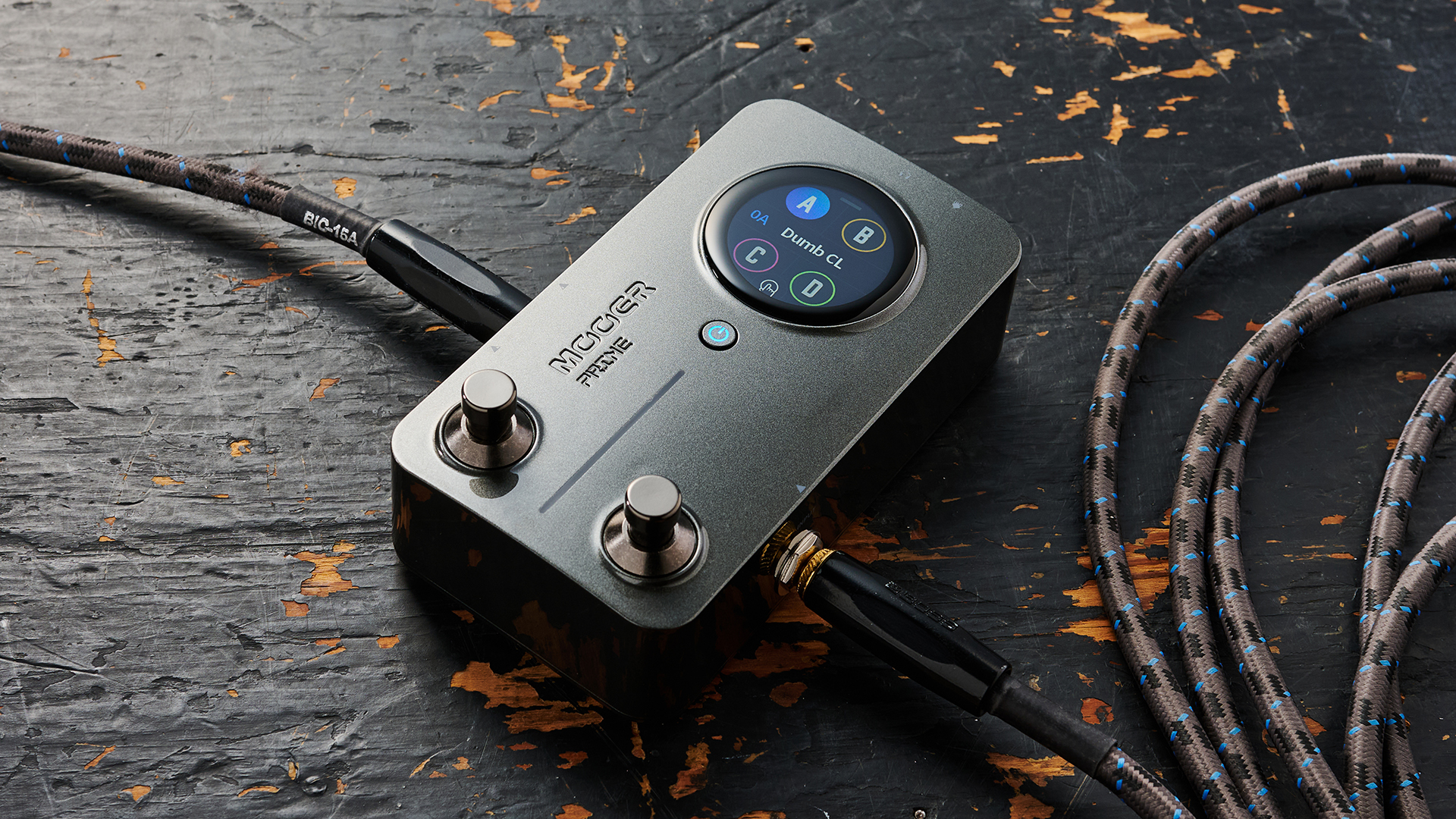
You can also connect this pedal to an external MIDI footswitch (there’s even a mini-jack to MIDI cable included), or the Mooer M4 Wireless footswitch (sold separately).
In a world where players are spoilt for choice when it comes to amp modellers and multi-FX, it would appear that Mooer has gone down the route of trying to do the most in the smallest package, for the least amount of money. Does this mean sacrifices have had to be made? Let's find out!
Specs
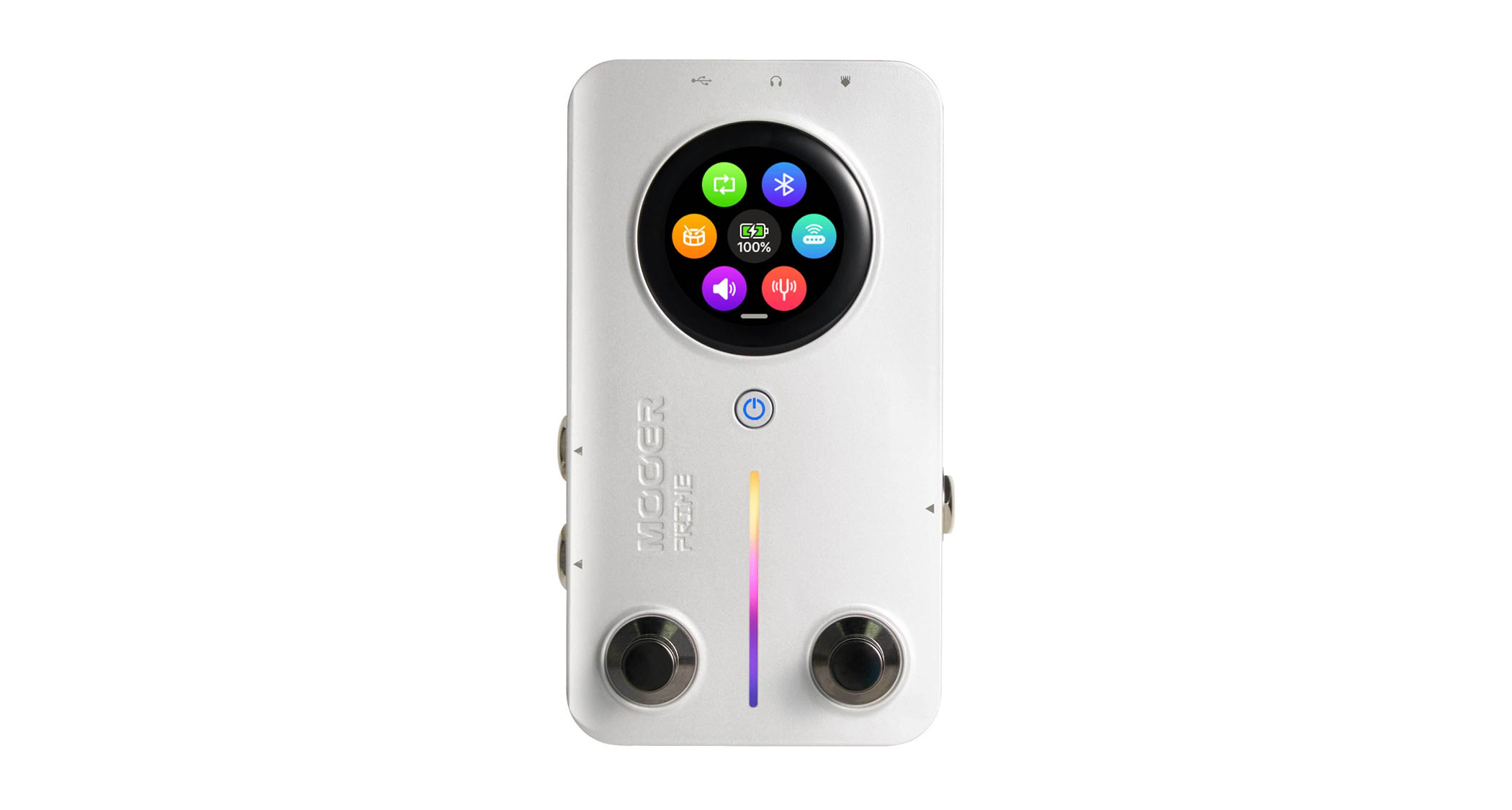
- Launch price: £175/€199/$189
- Type: Digital amp modeler and multi-effects pedal
- Controls: Color touchscreen, two footswtiches
- Features: 194 amps and effects, looper, drum machine, tuner
- Connectivity: Input, output x 2 (for stereo operation), MIDI (3.5mm), headphone output (3.5mm), USB-C, Bluetooth
- Power: 3000 mAh lithium battery charged via USB-C mA
- Dimensions: 74mm x 125mm x 49mm
- Weight: 228g
- Options: Grey (as reviewed) or Silver
- Contact: Mooer Audio
Build quality

Build quality rating: ★★★★☆
Upon unboxing the pedal, the thing I immediately noticed was that it’s made from plastic. Normally, this would put me off, but I must admit, it still feels really well made and actually quite sturdy.
The two footswtiches offer just the right amount of resistance and feel like they’ll withstand a good amount of stomping while still remaining responsive.
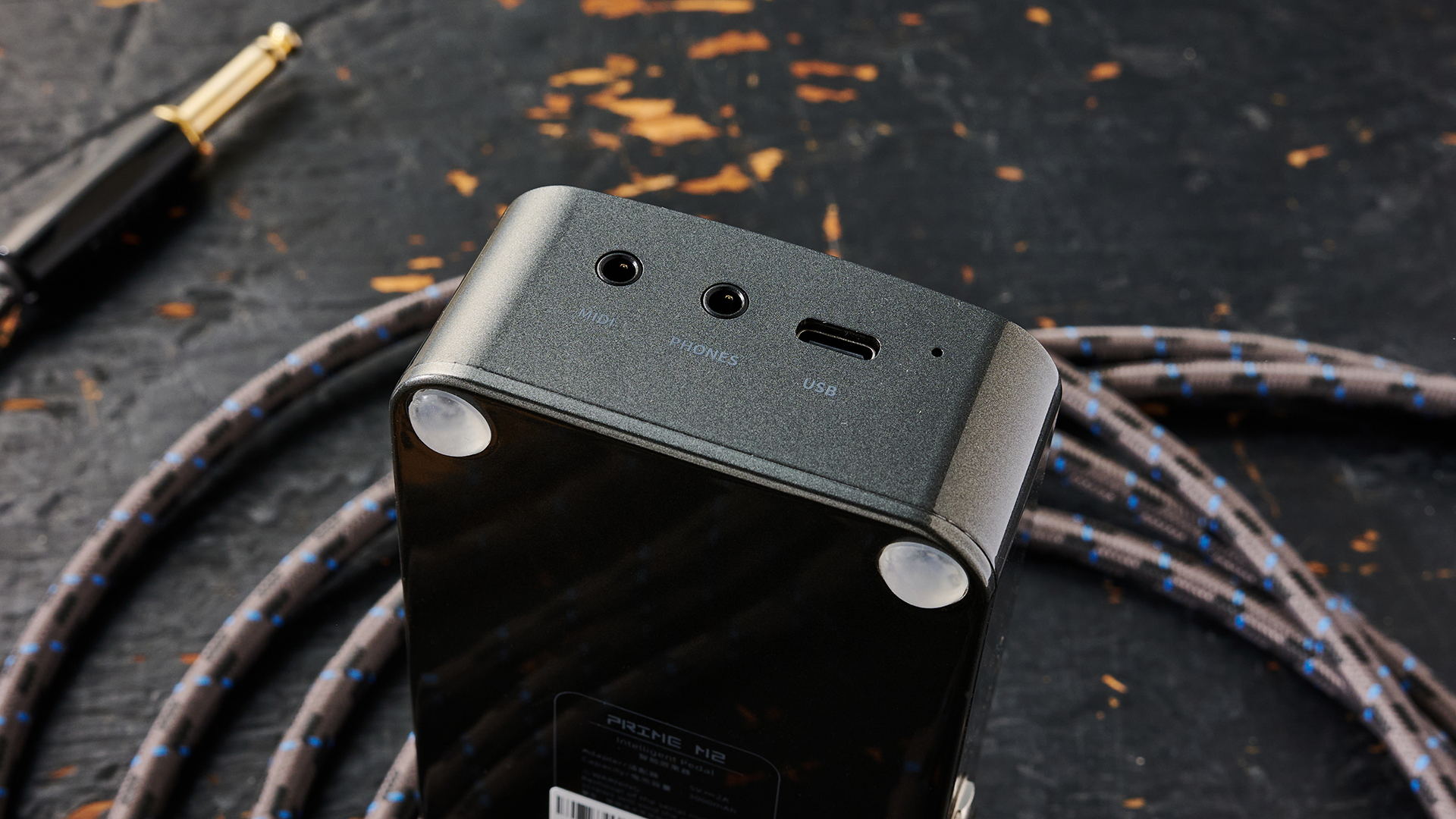
It’s quite light (thanks to the plastic casing), and obviously it’s super-compact which does make it extremely convenient for those wanting something that’s easy to travel with.
As mentioned, it’s powered via USB-C so if you’re going to put it on a 'board, keep that in mind - you don’t need to dedicate a 9v connector for it. You can charge it up and then use it running off the lithium battery which further aids its usefulness for those on the move regularly.
Usability
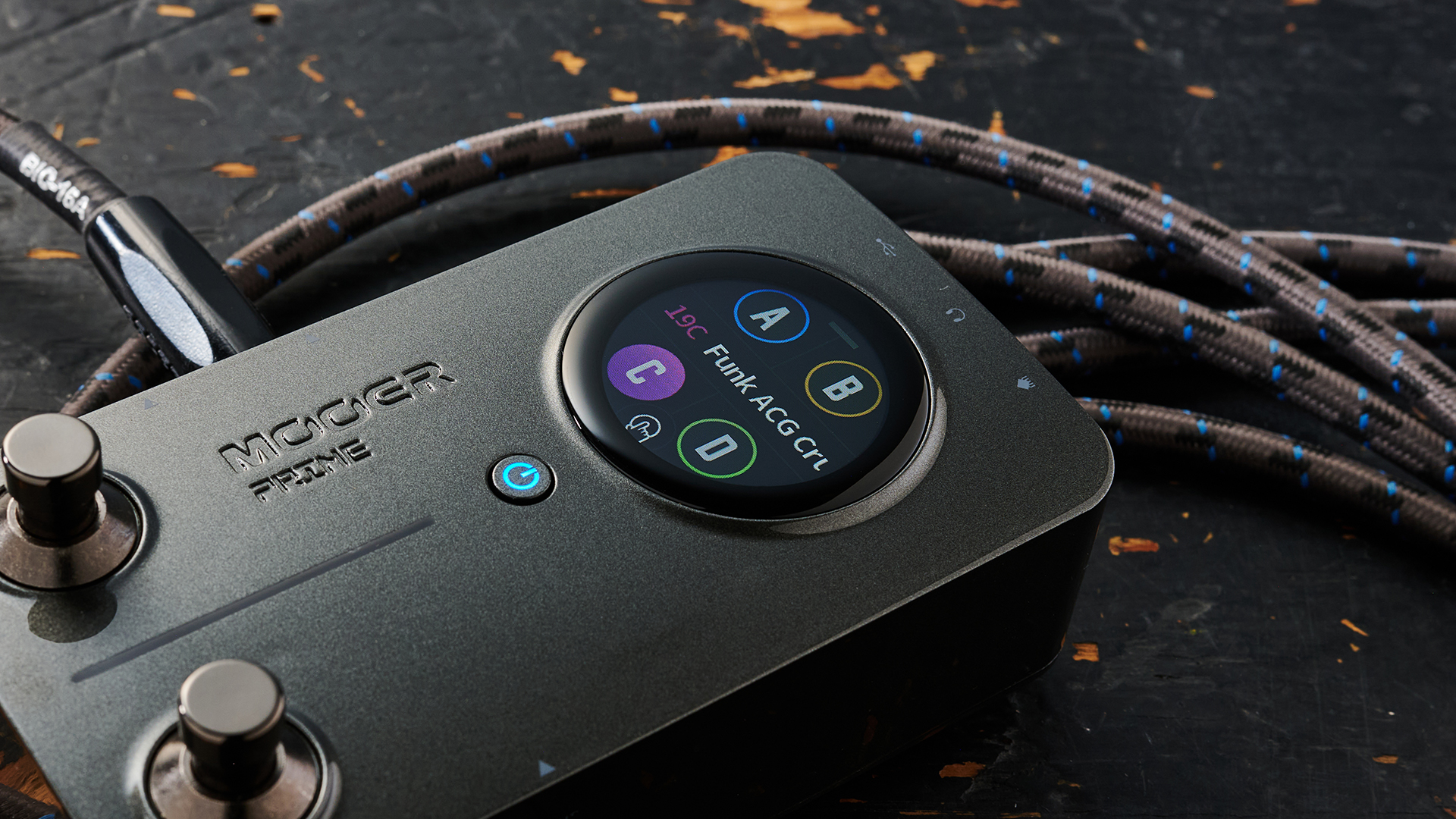
Usability rating: ★★★★☆
There’s no way of adjusting any sort of parameter - volume, gain, EQ etc - without dialling it in on your smart device
The first thing to mention when it comes to the usability of the Prime M2 is that any tweaks you want to make to the presets has to be done via the app on your phone or tablet.
There’s no way of adjusting any sort of parameter - volume, gain, EQ etc - without dialling it in on your smart device. The Prime M2 does have Bluetooth and is really easy to pair with. What you can do on the pedal alone is switch between the different presets, of which there are 80 ready for you to use straight out of the box.
They’re banked in groups of four, so 1A, 1B, 1C, 1D then 2A, etc. The right and left footswitches allow you to scroll through the presets forward and backwards, respectively. You can also use the touchscreen to either select A, B, C or D, or switch to the next bank.
You can only use the footswtiches to go either forwards or backwards in the presets, though you can change their order in the app
Quickly pressing the on/off button, it locks the touchscreen too, if you’re worried about accidentally adjusting any settings. Holding down on the left pedal takes you to the tuner; the right gives you to access the tap tempo function.
If you’re wanting to use this live, or you want access to a number of different presets without having to bend down then you’ll need to programme them in the order you need them in. Remember: you can only use the footswtiches to go either forwards or backwards in the presets, though you can change their order in the app.
If you swipe down from the main preset screen on the pedal, you can access some settings and other features. You’ve got the global volume, Bluetooth, wireless footswitch connection, tuner, drum machine and looper.
Getting to that settings screen does feel a little clunky using the touchscreen, as do some other parts of the menu - don’t expect it to be as responsive or sensitive as the screen on your phone.
All of the tone-tweaking is done via the app which definitely helps - if you were having to adjust anything on this small touchscreen, I’d imagine a lot of people would get frustrated quickly.

The app is actually very intuitive. You’re immediately greeted with the different components that make up the tone produced in the preset that you’re on - amp, cab, pedals etc. Click on any particular part of it and you can quickly adjust different parameters with ease.
If you land on a preset that you like, but want to make a few changes, you can do that and then save it for quick recall either on your device or the pedal itself. You can even start again and build a new sound from scratch choosing your amp and cab plus any pedals you want to add in. There’s also the option to upload third party IRs which is a nice touch.
The looper allows you to record up to eight minutes of audio and overdub as many times as you like. You can then save this for future recall, but what’s really handy is that you can do this up to 10 times, giving you a potential 80 minutes of looper time to play with. The looper is really easy to use, especially given that it’s got two footswitches.
Its long record time opens the pedal up to some more non-conventional uses. Say your band uses backing tracks; you could potentially store up to ten backing tracks (as long as none of them exceed 8 minutes), and the use the pedal for playback and run it through front of house or an IEM system.
Sounds
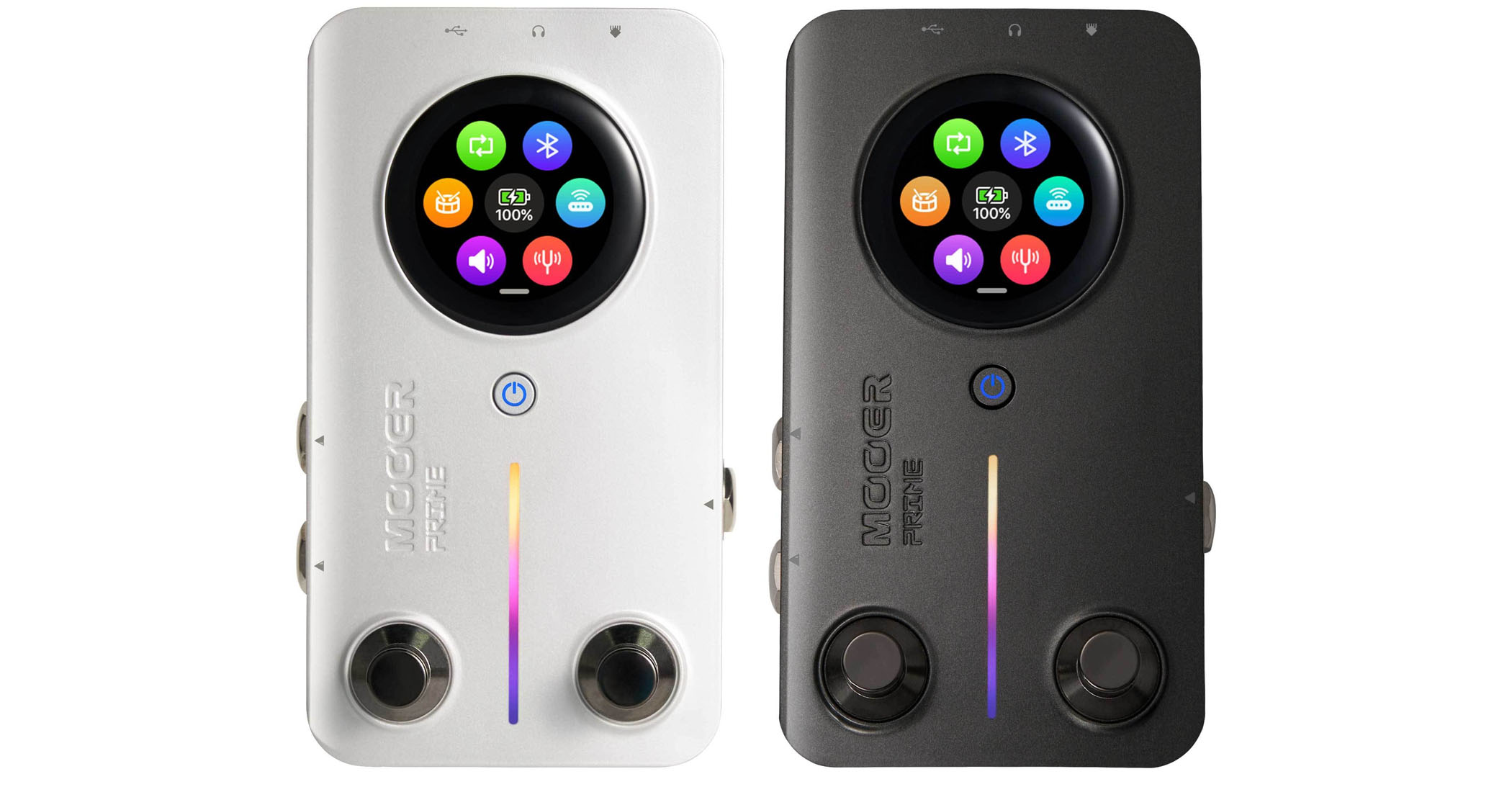
Sounds rating: ★★★½
It’s got all this functionality, but does it sound any good? It can sound great; there are some really usable presets straight out of the box, but, like with most budget stuff, it’s also pretty easy to get it sounding bad.
Let’s start with the good points. It’s a fairly affordable piece of gear, and you get a massive array of tones just with the factory presets. Once you dive into the app and start crafting your own, you’ve got a whopping 194 different amps and effects to play with.
As you might expect, it covers everything from super clean through crunchy overdrive all the way to high-gain territory. It doesn’t matter what style of music you play, you can dial in a suitable sound either from scratch, or using a preset as a starting point.
Is the quality of the sounds going to convert tube enthusiasts or users of units like the Quad Cortex or Kemper? Probably not, but those already on the digital path might think about getting one of these to have as a spare in case their main rig goes down. You don’t get the same level of response as these more expensive options, and the tones aren’t as refined, but they’d certainly do in a pinch!
The amps and pedals are fairly obviously named too - you know when something’s trying to be a Fender or a Marshall, for example. This is good if you know what you’re after, though a lot of the amps do fall short of actually emulating the real thing.
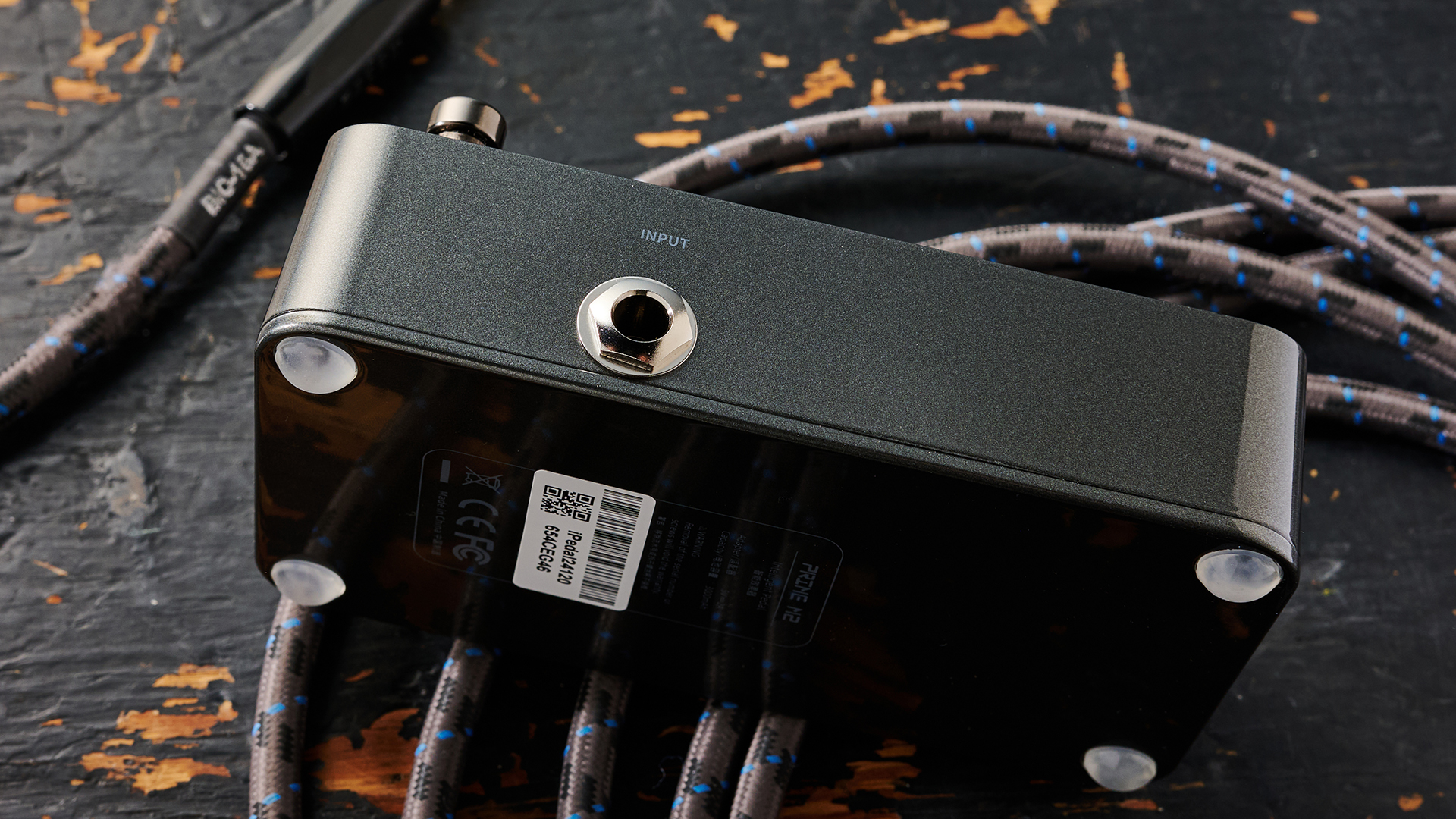
Digital modelling can often suffer when it comes to both the super clean and high sounds. The cleans are pretty good - once you’ve got some reverb or delay on there, you can get by quite happily.
It’s a comprehensive entry into the world of effects for those who are new to it
Some of the high gain settings are really good too, with a distinct lack of that fizzy ‘wasp-in-a-bottle’ tone that plagues some modeling units. Within the 80 factory presets, there are some pretty harsh sounding heavy tones in there as you might expect, but I found a good handful that I liked and, with a few tweaks in the app, got them sounding even better.
I am more impressed with the effects; everything’s in there, and every one I've tried is good. Again, you’re not going to immediately rush out and replace your individual pedals, but that’s not the point here. It’s a comprehensive entry into the world of effects for those who are new to it.
You’ve also got the option of making an online account and gaining access to a ton of user-made presets should you want to explore what other players have been doing with the pedal.
I tested the pedal with a Tele and an SG and found a lot of the presets to be quite dark sounding. So, to rectify that, you’ve either got to dial it in your actual amp/speaker if you’re using one, or go into the app and adjust the settings there.
Verdict
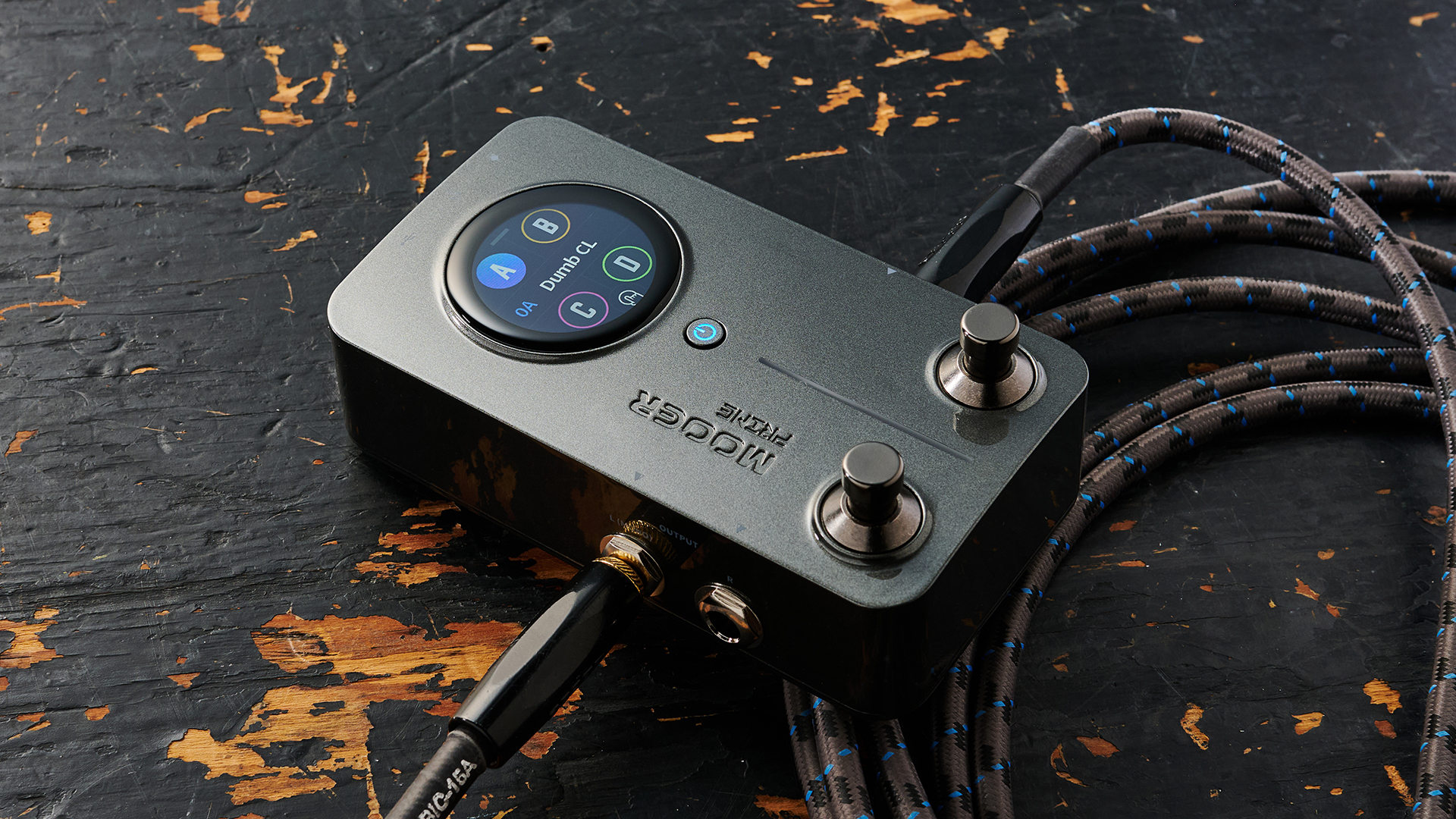
The Mooer Prime M2 is undoubtedly a lot of fun to play around with. The factory presets are mostly very good, albeit with a few questionable ones thrown in there. The quality of tones is perfectly acceptable; even more so when you consider the price.
That’s what this multi-effects unit does really well - value for money. It’s absolutely packed full of features, and for someone looking to get their hands on a ton of sounds without spending much cash, then it’s an excellent option.
If you don’t like menu-scrolling, then move along; this isn’t for you
Whether you’re looking to use it to start playing your first load of live shows, or you’re using it as a portable recording device, it’s got you covered. Would you see pros use it? Probably not, unless as a backup, but that’s not really who this is aimed at. That said, its portability might win over players for whom saving space is paramount.
If you don’t like menu-scrolling, then move along; this isn’t for you. You only really get the most out of it when you’re using the app; it’s not a plug in and play thing. Some of the touchscreen navigation feels a little clumsy, but you don’t need to do loads of that. You also need to be clever with how you programme your presets if you’re using it live.
MusicRadar verdict: Another contender in the world of affordable digital modelers, the Mooer M2 packs a lot into a small pedal. If you’re using a smart device alongside your gear then you’ll get along with it just fine, and the amount of models and features on offer means you're unlikely to get bored in a hurry.
Test | Results | Score |
|---|---|---|
Build quality | Despite the plastic housing, the M2 feels solid. | ★★★★☆ |
Usability | The touchscreen is slick and responsive, however it relies heavily on app control. | ★★★★☆ |
Sounds | The M2 has some solid tones and plenty of effects and features to keep you busy. | ★★★½ |
Overall | Mooer has packed a lot of features into a compact pedal for not a lot of money. Worth a try. | ★★★★☆ |
Also try
Line 6 HX Stomp- $559/£558/€529
With a full house of Helix models, the HX Stomp is a powerful, stage-ready unit equipped with top-class sounds. if you are ready to invest.
Read more: Line 6 HX Stomp review
NUX MG-400 - $229/£199/€195
The MG-400 from NUX packs 25 amps and cabs, as well as 48 effects and expression pedal control into an affordable floor-based unit, representing excellent value for money if you're on a budget.
Read more: NUX MG-400 review
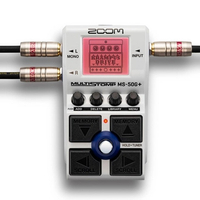
Zoom MS-50G+ Multistomp - $129/£129/€149
It's main-powered only but this is another value-packed pedal with 100 effects and the option to use up to six simultaneously. The encoder keys can be a bit fiddly to use but there's much to recommend elsewhere.
Hands-on videos
Mooer
Kai Down
Ola Englund
After spending a decade in music retail, Richard is now a freelance writer for MusicRadar, Guitar Player, Guitar World and Reverb, specialising in electric and acoustic guitars, bass, and almost anything else you can make a tune with. When his head’s not buried in the best of modern and vintage gear, Richard runs a small company helping musicians with songwriting, production and performance, and plays bass in an alt-rock band. Otherwise, you'll probably find him out walking the dog!
You must confirm your public display name before commenting
Please logout and then login again, you will then be prompted to enter your display name.
